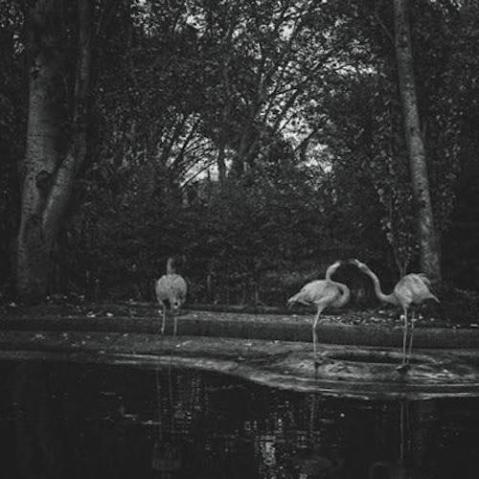Visualise, compose, shoot

Visualize, compose, and shoot: it’s the same three-step process you should go through with almost every photograph that you take.
 Swiftcurrent Lake, Glacier National Park, MT
Swiftcurrent Lake, Glacier National Park, MT
The first step—visualization—is all about becoming aware of the photograph. Stop, close one eye to see the view in just two dimensions, just as a camera does. Then scout for the interesting details. Look at the view from different heights, and try to visualise what it might look like from another angle, at a different vantage point. Use your hands to create an approximate image frame, or work with a card or plastic 35 mm slide frame at different distances from your eye to approximate the framing of various focal lengths. In addition, think about how adding filters, bracketing, HDR imaging, or additional colour work can affect the final photograph.
Visualizing an image is a who, what, when, where, why, and how process, with ‘What if?’ being the most important element of creative photography. What if I were to look at this scene from a higher or lower angle? What if I used a long shutter speed? What if I tried a different lens or filter? What if I used a shallow depth of field? What if I adjusted the ISO setting? What if I tried panning the camera? What if I waited for different light or weather conditions? What if I returned at another time of year, when the sun is at a different angle? These are all questions you need to ask yourself.
 This fiery ornamental tree had wonderful
This fiery ornamental tree had wonderful
detail in the branches, but it benefits from a sense of place within the Japanese garden setting. This composition would still work if a branch covered over the doorway, but the door calls you deeper into the image and adds a sense of mystery. Hammond Museum Japanese Stroll Garden, North Salem, NY
Once those questions have been answered, the second step is to get the camera out, put a lens on, and physically work the scene with different focal lengths. The key to composition is to condense the larger view down to the main supporting details within a scene. Our tendency is to step into a grand landscape and visualise the whole scene, but creating an evocative photograph comes from composing the image around eye-catching details.
Some people work from the details out, others from the wide view in. If your thought pattern tends to work from the widest view to the details, you’ll typically look for the broadest view that will work for a composition first. You might well start by looking at whether you can do a 360 degree panorama, then work your way in to a narrower panorama, a wide-angle landscape, telephoto details, and finally think about macro imagery. Oftentimes, there are many smaller detailed views within a larger view.

Visualise, compose, shoot
- Recognise the value of a familiar subject, but perceive the essence of what you are looking at.
- The best photographs come from not only seeing the view, but experiencing it as well.
- Learn how to express your feelings for the subject through the mood of the photograph.
- Having one quality image is far better than having a quantity of less inspiring images.
- Learn to sense anachronisms in the composition. It is often easier to see what does fit, than what doesn’t.

Acclaimed photographer Carl E. Heilman II has been photographing the landscape for more than thirty years. In this comprehensive guide, he shares the latest techniques for capturing professional-quality digital images in the field. Bursting with hundreds of inspiring images and a genuine passion for the natural world, Advanced Digital Landscape Photography is the definitive guide for today’s outdoor photographer.
 Advanced Digital Landscape Photography, by Carl Heilman II
Advanced Digital Landscape Photography, by Carl Heilman II
£7.99 Download the PDF now!
This PDF version retains the styling of the original print book.
RRP for print edition: £15.99





